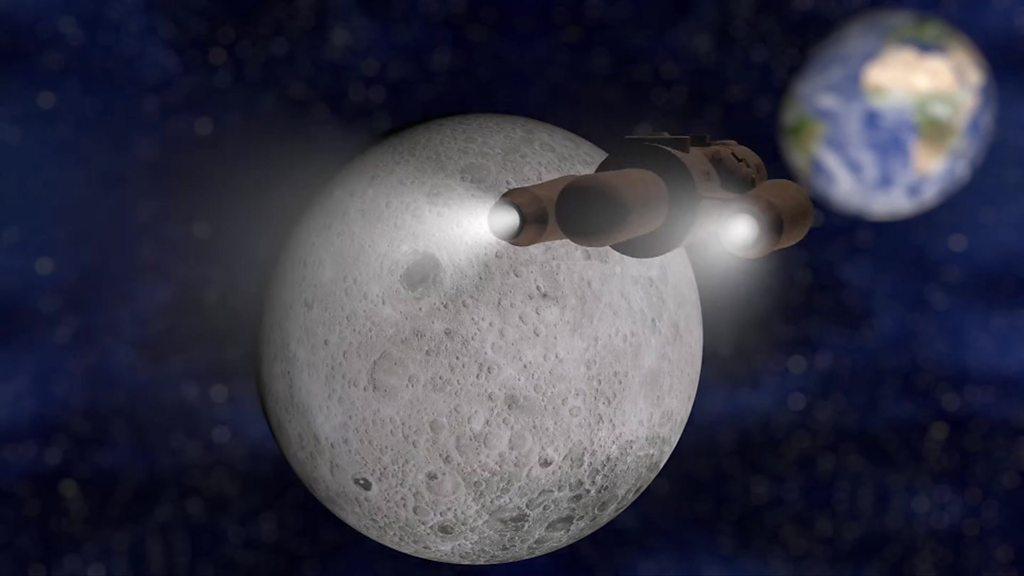Climate change: How a laser beam is being used to track it
- Published
- comments

Now this might look more like a fun lightshow, than something which could help tackle climate change.
But it is actually a laser shooting into the sky at the European Space Agency's (ESA) Concordia research station in Antarctica.
So, what's the purpose of the single green beam?
The laser is part of the station's Light Detection and Ranging instrument (LIDAR) which uses light to monitor an object.
Its job is to study the Antarctic atmosphere, including the effects of pollutants.
LIDAR directs the laser within a specific section of the atmosphere and uses scattered light to measure things like the temperature, wind speed, density, cloud formation and aerosol particles.
The instrument helps to monitor something known as the Atmospheric Boundary Layer - that's the part of the atmosphere that directly feels the effects of changes on the Earth's surface and is impacted by temperature, wind and moisture.
Changes on the Earth's surface are mainly caused by things like greenhouse gases, which are increasing temperatures, and the release of chemicals like CFCs (chlorofluorocarbons - these gases were used in aerosol cans and refrigerators during the 20th century) which damage the Earth's ozone layer.
Both of these factors, which are largely a result of human activity, influence the atmospheric boundary layer and contribute to climate change.
- Published7 February 2020

- Published20 July 2019

- Published20 May 2020

